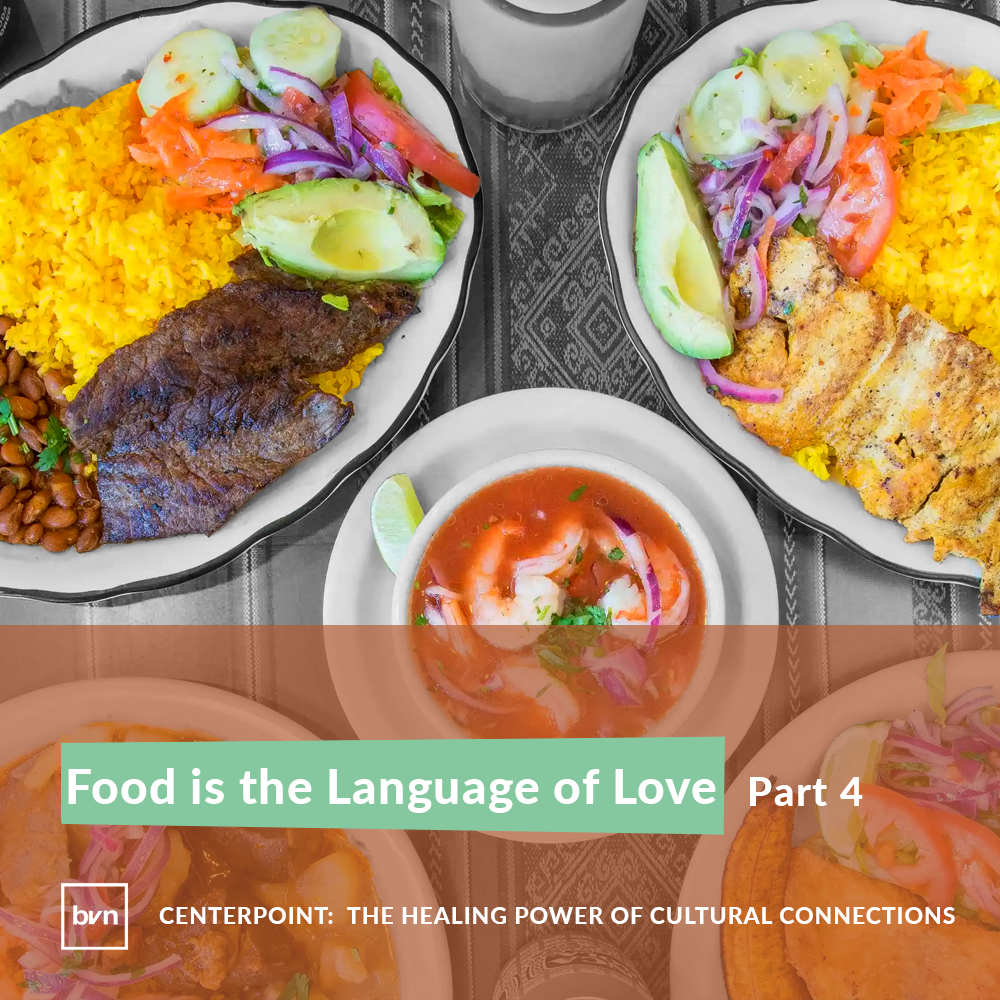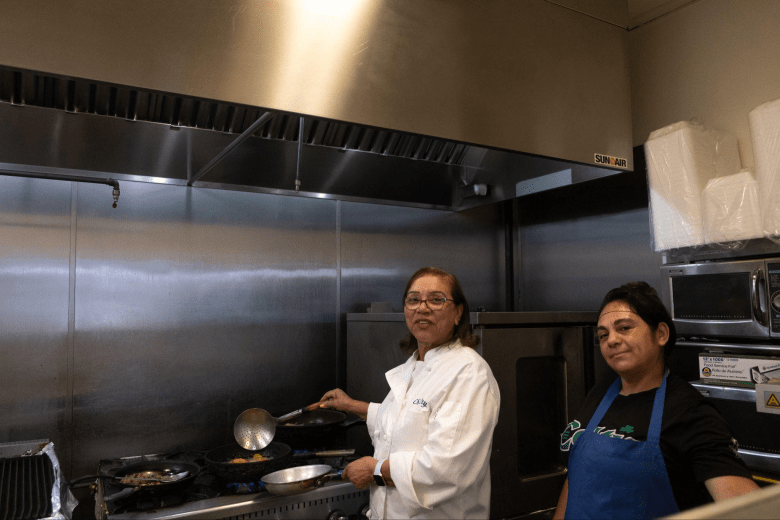Last Updated on December 4, 2023 by BVN
Luca Martinez | Photos by Aryanna Noroozi
You could call it a restaurant founded on a gamble and rooted in authenticity. You should call it the first of its kind. But more than anything, you must call Daysi’s Gusto Nicaraguan Cuisine the culmination of one woman’s lifelong dream.
The dream, after some initial pandemic and foot traffic challenges, has taken off for owner Daysi Barberena, who immigrated to the United States in 1972. She opened the restaurant in 2016 using her life savings from 40 years working in data entry, with the goal of sharing her country’s cuisine.
“We are the first and only in the Inland Empire,” said Barberena, a 67-year-old native of Nicaragua’s capital Managua.
Today, that reputation has helped the restaurant blossom into not only a hub for the Nicaraguan community but for several cultures. The welcoming environment yields people from multiple cities, states and countries.

On any given day, people from Central America, South Africa and the Philippines will all be enjoying food in the restaurant. Other times, returning customers from Arizona, Las Vegas or San Diego will make hour-long drives just for dishes that they can’t find anywhere else.
“People from Africa come because of the yucca we serve,” Barberena said. “People from the Philippines come because we serve plantains. They each identify with a certain food.”
At its core, however, the restaurant is a symbol of Barberena’s homeland.
The blue painted walls proudly feature a Nicaraguan flag along with a map of the country because “not too many people know where Nicaragua is,” said Barberena. Restaurant workers wear uniforms that carry a sacuanjoche, (Plumeria rubra) the country’s national flower. And customers are welcome to buy any of the keychains, t-shirts or handmade sandals coming from Nicaragua.
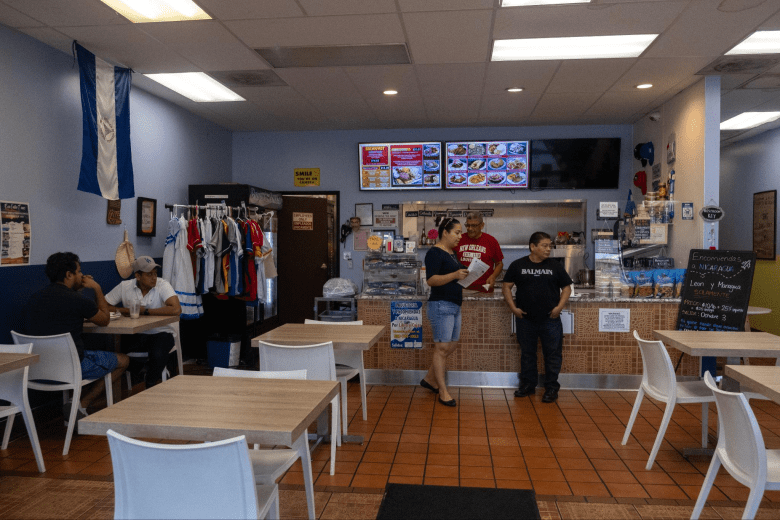
People come here and meet each other and reconnect with their families so it’s been a pleasure to serve the Nicaraguan people in this way,” Barberena said.
Then, there’s the food.
Most popular are the fritangas, which are a set of fried foods and a reference to Nicaraguan street eateries. In both cases, they are a homage to Barberena’s younger years. As a child, she recalls frequently going out to the eateries for dinner with family and friends.
“Fritangas are like taquerias here,” Barberena said.
Now at her restaurant, clients can customize their fritanga plates. Each one comes with a cabbage salad, fried cheese, choice of rice, choice of meat (pork, grilled beef or chicken) and choice of plantains — fried ripe plantains, fried green plantains or tostones (chips).

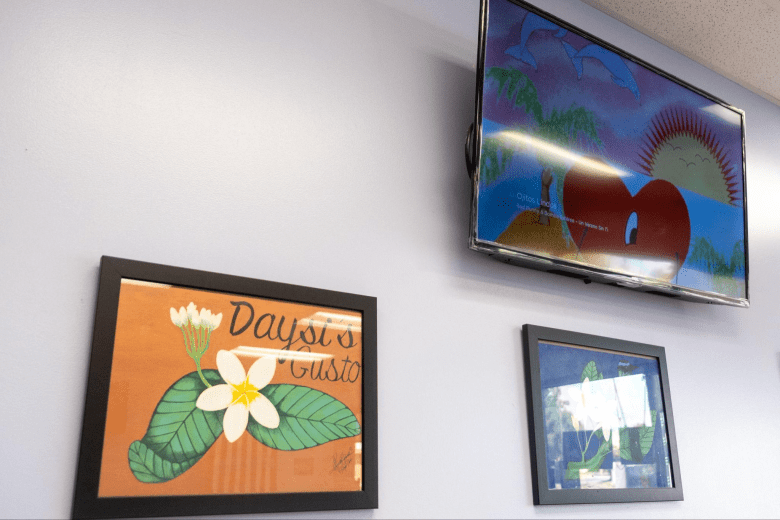

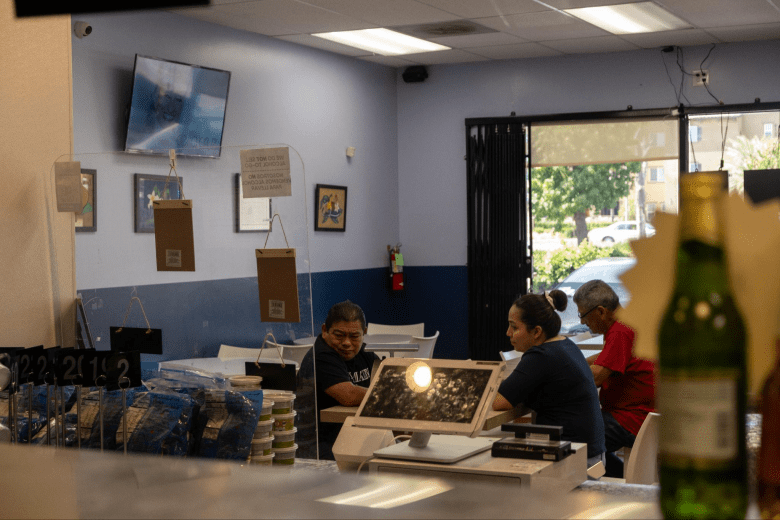
The restaurant also serves other traditional plates including enchiladas de res, a distant cousin of the Mexican enchilada, and two dishes available only on weekends: baho and nacatamales.
Baho is a steamed dish prepared using yucca, beef and plantains, with the ingredients added to a cooking pot that is sealed with layers of banana leaves to hold in the flavors.
Nacatamales, made with the recipe of Barberena’s mother, are Nicaraguan tamales made with banana leaves.



Another restaurant main attraction is the caballo bayo, a dish served with three types of meats, yuca, green and ripe fried plantains and, perhaps most notably, gallo pinto — the national dish of Nicaragua.
In its simplest form, gallo pinto is a mixture of rice and beans that can be eaten by itself or with other dishes. However for many, such as Barberena’s oldest daughter Inez Perkins, gallo pinto symbolizes much more.
The dish was a staple in the family’s home while she was growing up, Perkins said. And even today, she can open her refrigerator and find gallo pinto at nearly any time of the day.
But it wasn’t until last year, during a visit to Nicaragua with her mother, that Perkins realized the full importance of the dish to her family.
“It feeds so many,” Perkins said. “And my mom grew up on a level of poverty, that her mom making the food went such a long way. So, I further learned to appreciate that we have what we have because of the sacrifices of my parents.”
Those sacrifices made it easy for the family to get behind Barberena’s goal of owning a restaurant. No one in the family, including Barberena, can pinpoint exactly when the dream began, just that she’s always enjoyed the kitchen and excelled at cooking.
Perkins said her friends learned early on about her mom’s Nicaraguan dishes. And on one Mother’s Day, the family bought her cooking classes. Another year, they gave her a professional chef’s apron with her name.
“I can’t remember where she wasn’t talking about opening a restaurant,” Perkins said. “Anyone who knows her, knows her dream was always to open a restaurant.”
Though supportive, the family did worry about the risks. Barberena was in the midst of retiring and proposing putting all her savings to the restaurant.
So, to ensure its success, the restaurant became a family effort. Each of Barberena’s three daughters, son–in-laws and some grandchildren have spent days working in the business. Together, they got through the early challenges of not having enough clientele and then a raging pandemic that closed off in-door dining.
At the helm, however, remains Barberena. Most days, you will still find her in the back of the restaurant cutting onions, spreading her culture through food and continuing the dream.
“This risk definitely has paid off,” Perkins said.“It made her happy. I can see the joy in her when she cooks for people or when people come to the restaurant and they’ve been looking for a Nicaragüense restaurant.”
Daysi’s Gusto Nicaraguan Cuisine is open Tuesday through Saturday from 10 a.m. to 7 p.m. and Sunday from 10 a.m to 6 p.m. It is located at 625 S Riverside Ave. in Rialto.
This project was supported in whole or in part by funding provided by the State of California, administered by the California State Library.
Food is the Language of Love
Part 1: Everything Resolves Around Food
Part 2: A Restaurant Unlike Any Other
Part 3: The Taste of “Little Thumb”
Part 4: Spreading Nicaraguan Culture through a Dream Come True



